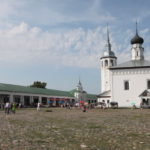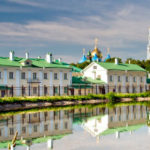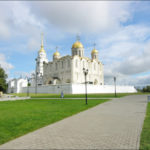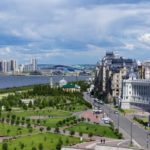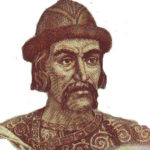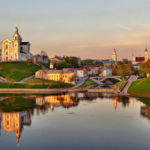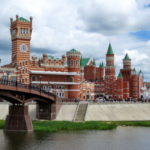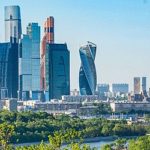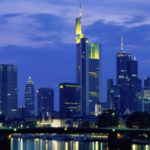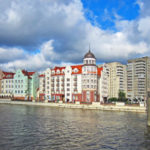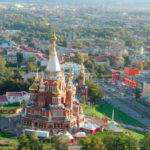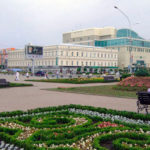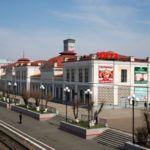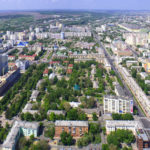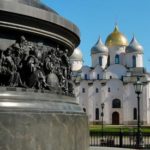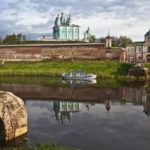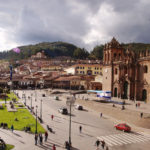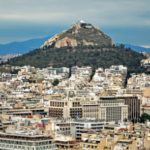Interesting facts about Yaroslavl
 Yaroslavl is a city with ancient thousand-year history. He not only enters the famous “Golden Ring” of Russia, he also claims to be informally considered his “capital”. Of course, other cities of the “Golden Ring” are also very, very interesting, but in Yaroslavl really preserved a huge number of monuments of antiquity, so there is something to see.
Yaroslavl is a city with ancient thousand-year history. He not only enters the famous “Golden Ring” of Russia, he also claims to be informally considered his “capital”. Of course, other cities of the “Golden Ring” are also very, very interesting, but in Yaroslavl really preserved a huge number of monuments of antiquity, so there is something to see.
1. Yaroslavl ranks third in terms of population among the cities of the Central Federal District of Russia (according to this index it is second only to Moscow and Voronezh).
Yaroslavl is one of the most ancient Russian cities and the oldest existing settlement on the Volga. It was founded in 1100 by Prince Yaroslav the Wise and reached the zenith of his glory in the 17th century.
Yaroslavl celebrates City Day on the last Saturday in May.
Yaroslavl is called one of the contenders for the title of “capital” of Russian cities of the “Golden Ring”.
In 2010, residents of Yaroslavl celebrated the millennium of their city. Round date, agree.
In Yaroslavl, a census of nightingales is conducted annually – for example, in 2010 more than 900 pairs of these song birds nested on the city’s territory.
According to environmentalists, the dirtiest air in Yaroslavl accumulates on Tolbukhin Avenue and the local Red Square. Yes, there is also Red Square, as in Moscow.
One of the oldest parks in Yaroslavl, Petropavlovsk Park, is located on the former territory of the Yaroslavl large manufactory. In the unique for the local architecture of the church in the name of the holy apostles Peter and Paul in the years of Soviet power was the home of the pioneers.
Behind the stone wall and moat of Tolgsky monastery in Yaroslavl 5 centuries ago a unique park was erected from Siberian cedar, which existed up to the present day.
On Red Square in Yaroslavl, a monument to Vladimir Lenin, which is an exact copy of the monument in front of the Smolny Palace in St. Petersburg, is only doubled in size.
The coat of arms of Yaroslavl is a shield that depicts a black bear on its hind legs. He holds the ax of gold, and crowns the shield with the cap of Monomakh. This coat of arms was adopted in 1995, but the historical symbolism of the city served as a prototype for it.
In IX century on the place of Yaroslavl there was a large settlement of the Scandinavian-Slavic tribe. During excavations, archaeologists discovered the richest northern European treasures of Arabian coins.
Yaroslavl is depicted on a Russian banknote with a nominal value of 1,000 rubles.
In Yaroslavl, the first tobacco factory, the Balkan Star, appeared in Russia.
Yaroslavl became one of the first Russian cities where the tram line was laid – this happened in 1900.
It was Yaroslavl that became the first Russian city where the theater appeared – the Volkov Drama Theater, named after its founder and director, Fyodor Volkov, in 1750.
The festival “Jazz on the Volga”, which is the oldest such event in Russia, has been held in Yaroslavl for 36 years.
In the historical center of Yaroslavl there are 140 architectural monuments, due to which it was included in the list of objects of the world heritage, which is UNESCO.
In 2003, Yaroslavl was awarded the European Union flag for the city’s contribution to the development of foreign policy relations.
In the Portuguese city of Coimbra, there is a street named after Yaroslavl.
English writer Daniel Defoe mentions Yaroslavl in the second part of his famous novel “Robinson Crusoe.”
In Yaroslavl on the embankment of the Volga there is a building known as the house of Bolkonsky – tourists are told that it was the prototype of the place where the hero of Leo Tolstoy’s novel “War and Peace” Andrei Bolkonsky was dying. At the same time, the great writer was never in Yaroslavl.
In Yaroslavl, the first diesel engine in Russia, a trolleybus and a truck were produced.
